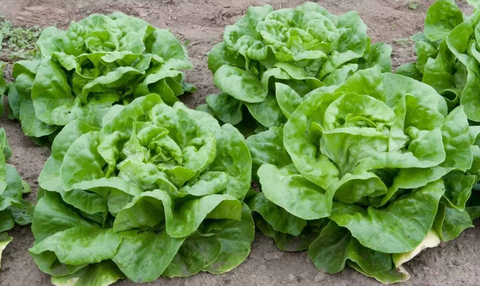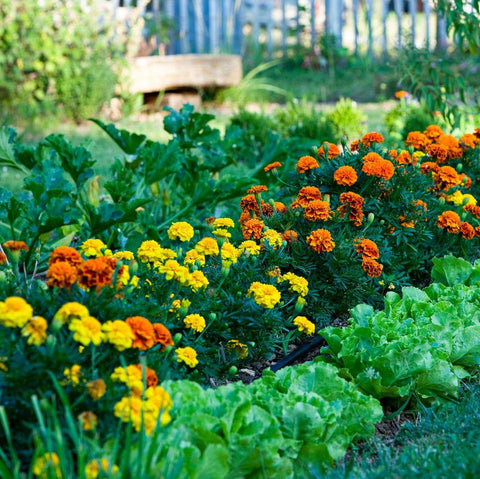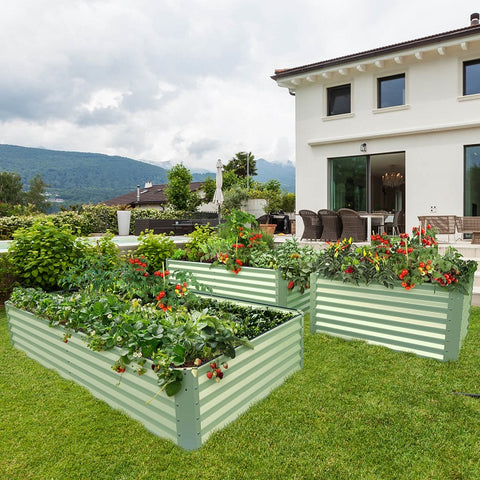In the world of gardening, space is a cherished resource. Whether you have a sprawling backyard or a modest urban balcony, the art of maximizing your growing area can transform your gardening experience. Enter the realm of vertical gardening in raised beds—a clever and efficient approach that enables you to cultivate a thriving garden while optimizing your limited space. In this comprehensive guide, we'll explore the concept of vertical gardening in raised beds, its numerous benefits, and how you can harness its potential.The following content also has some reference value for raised garden beds.

The Vertical Gardening Revolution
Vertical gardening is a dynamic technique that harnesses the vertical dimension to cultivate plants. It involves growing plants vertically on walls, trellises, or specially designed structures instead of allowing them to spread horizontally. This approach offers several advantages:
- Maximizes Space: Vertical gardening lets you grow more plants in a smaller footprint, making it ideal for urban gardens, balconies, and limited outdoor spaces.
- Efficient Watering: Vertical gardens often require less water than traditional gardens because they reduce soil exposure to the sun and air, minimizing evaporation.
- Improved Air Circulation: Vertical gardening enhances air circulation, which can help prevent diseases and promote overall plant health.
- Aesthetic Appeal: Vertical gardens can be visually stunning, transforming your outdoor space into a living work of art and adding a unique, appealing dimension to your garden.
When you combine the principles of vertical gardening with the practicality of raised beds, you unlock a powerful gardening solution that maximizes your growing potential. Raised beds offer enhanced soil control, better drainage, and reduced susceptibility to pests, making them the perfect canvas for your vertical garden.

Creating a Vertical Garden in a Raised Bed: Step by Step
Vertical gardening in raised beds is a versatile approach that accommodates a wide range of plants, from flowers and herbs to vegetables and fruits. Here's a step-by-step guide to help you get started:
1. Choose the Right Location
Select a location for your raised bed that receives adequate sunlight for your chosen plants. Most vegetables and herbs require at least 6-8 hours of direct sunlight each day. Ensure that the raised bed is easily accessible for maintenance and watering.
2. Select the Right Raised Bed
Opt for a raised bed that aligns with your space, requirements, and aesthetics. Consider using galvanized raised garden beds, which offer durability and an eco-friendly design. These beds resist rust and corrosion while providing a sleek, modern appearance that complements various garden styles. Ensure that the dimensions of the bed are suitable for your vertical gardening ambitions.
3. Plan Your Vertical Structures
Determine the vertical structures you want to incorporate into your raised bed. Common options include trellises, arbors, stakes, cages, and wall-mounted systems. Your choice will depend on the types of plants you intend to grow and the available space.
4. Choose Your Vertical Plants
Select plants that thrive in vertical gardening and are suitable for the structures you've chosen. Consider the following ideas:
- Climbing Vegetables: Beans, peas, cucumbers, and indeterminate tomatoes are excellent choices. Provide trellises or stakes for support.
- Vining Plants: Explore vining fruits like melons or squash, which can be trained vertically on trellises or arbors.
- Herbs: Many herbs, such as basil, thyme, and rosemary, flourish in vertical gardens. You can grow them either in pots attached to the structure or directly in the raised bed.
- Flowers: Add color and beauty to your vertical garden with flowering plants like morning glories, nasturtiums, or sweet peas.

5. Prepare the Soil
Prepare the soil in your raised bed by incorporating compost or well-rotted manure. Raised beds typically have excellent drainage, but ensure that the soil is loose, fertile, and well-aerated to facilitate optimal plant growth.
6. Install Vertical Structures
Set up your chosen vertical structures within the raised bed. Ensure that they are securely anchored and positioned to provide adequate support as your plants grow vertically.
7. Plant Your Vertical Garden
Plant your chosen crops or herbs at the base of the vertical structures. Pay attention to spacing to prevent overcrowding and encourage proper air circulation, which is essential for plant health.
8. Watering and Maintenance
Water your vertical garden regularly to maintain consistent moisture levels, but be cautious not to overwater. Apply mulch to help retain moisture and suppress weeds. Proper support for tall or vining plants is crucial to ensure they grow vertically without issue. Regularly monitor your garden for pests or diseases, taking appropriate action when needed.
Conclusion
Vertical gardening in raised beds represents a revolutionary approach to gardening, one that combines innovation, efficiency, and style. By embracing the vertical dimension, you can make the most of limited space while enjoying a myriad of benefits, from accessibility and precise soil control to enhanced drainage and extended growing seasons. When integrated with raised garden beds that offer durability and sustainability, your vertical garden becomes a dynamic and eco-friendly addition to your outdoor space.
As you embark on your journey into vertical gardening in raised beds, remember that the possibilities are as boundless as your imagination. Your garden will evolve into a lush, thriving sanctuary, growing up and reaching for the sky, all within the confines of your innovative and space-efficient raised bed. With the power of vertical gardening, you can turn even the smallest outdoor spaces into a flourishing green oasis, proving that in the world of gardening, the sky's the limit.









